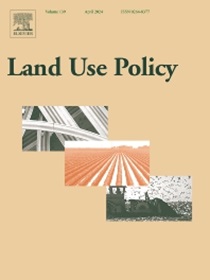Comments on Acosta-Velázquez et al. changes in mangrove coverage classification criteria could impact the conservation of mangroves in Mexico. Land Use Policy, 2023, 129, 106651
Abstract
Accurate and up-to-date mapping of mangrove habitats is crucial for effective conservation and management strategies and policies. As a reply to the comparative assessment realized by Acosta et al. (2023) to the last map produced by the Mexican Mangrove Monitoring System (MMMS) and the conclusions resulting from it, we provide a comprehensive response addressing the concerns raised. We acknowledge that maps are not infallible and are subject to improvement, particularly in the rapidly advancing field of remote sensing technology used in long term monitoring system. The MMMS mapping efforts utilize state-of-the-art remote sensing technologies, such as high-resolution satellite imagery and advanced methodologies, to enhance precision and efficiency. Moreover, MMMS mapping integrates regional external expert knowledge to increase accuracy at uncertain locations. We emphasize the importance of accuracy and reliability in mangrove mapping due to the potential irreversible consequences of mangrove loss. The MMMS provides a valuable tool for monitoring deforestation rates, understanding spatial distribution, supporting management decisions, identifying conservation priorities, and facilitating targeted conservation actions. We highlight the application of the precautionary principle as an environmental imperative for the Mexican government. The inclusion of previously classified "Other wetlands" as mangroves in the MMMS mapping system implies the acknowledgment of their integral role in supporting biodiversity and climate change mitigation efforts. Technological progress and collaborative efforts have made this reclassification possible, enhancing our understanding and expertise in distinguishing mangroves from other wetland types. We conclude that our mapping efforts align with the objective of attaining high classification accuracy in remote sensing, and we remain committed to continuous improvement in our mangrove mapping endeavors.

 求助内容:
求助内容: 应助结果提醒方式:
应助结果提醒方式:


